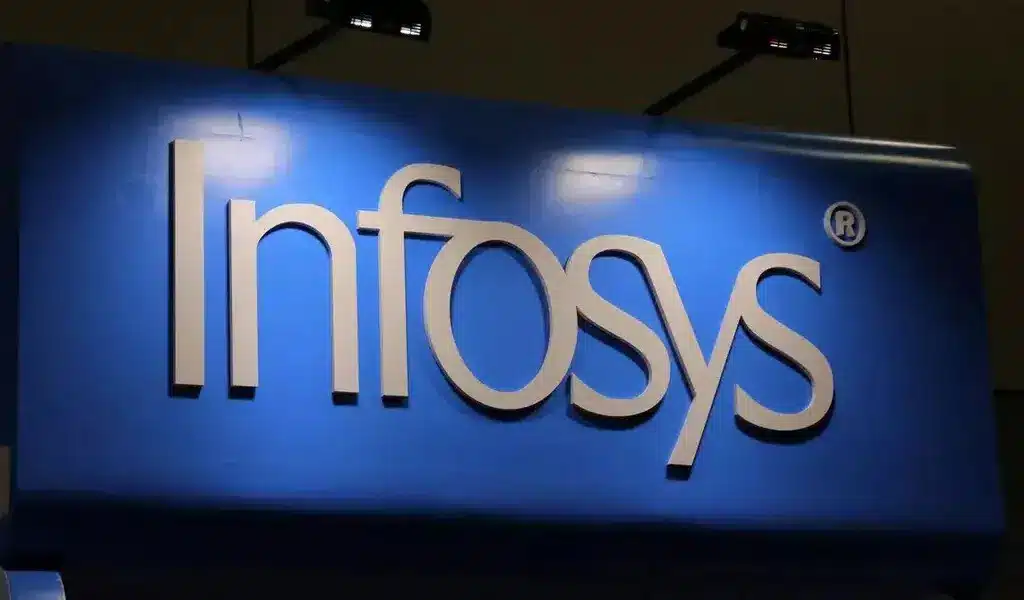Business
Energy Swaps: Unraveling Oil Trading’s Complexities

Energy swaps play a crucial role in hedging strategies within the oil trading industry. In this article, we delve into the intricate world of energy swaps, exploring their key participants, factors and the role they play in managing risk.
If you want to learn about trading oil options, explore the topic of Strategies and Applications in this field.
Key Participants in Energy Swap Markets
Producers and Consumers form the foundation of energy swap markets. Producers, such as oil companies and energy producers, utilize energy swaps to hedge against price fluctuations and protect their revenue streams.
By locking in prices for future deliveries, producers can manage their exposure to market volatility and ensure stability in their operations.
On the other hand, consumers, including industrial companies and energy-intensive sectors, rely on energy swaps to secure a predictable cost structure and mitigate risks associated with energy price fluctuations.
Financial Institutions play a significant role in energy swap markets by providing essential services and acting as intermediaries.
Banks, investment firms, and other financial institutions facilitate the execution of energy swap transactions, offering liquidity and risk management solutions to market participants. These institutions often act as counterparties, taking on the other side of the swap contracts to ensure smooth and efficient trading.
Trading Companies and Hedge Funds also play an active role in energy swap markets, leveraging their expertise in trading and risk management. Trading companies engage in energy swap transactions to profit from price differentials and market inefficiencies.
By taking positions in the market, they seek to capture favorable price movements and generate returns. Hedge funds, known for their sophisticated trading strategies, also participate in energy swap markets, utilizing swaps as part of their overall portfolio management.
The Role of Energy Swaps in Hedging Strategies
Energy swaps play a pivotal role in hedging strategies within the oil trading industry. Hedging is a risk management technique employed by market participants to mitigate the potential impact of price volatility on their operations and financial performance.
Energy swaps offer a versatile and effective tool for participants to protect themselves against adverse price movements and ensure stability in their revenue streams.
One of the primary roles of energy swaps in hedging strategies is to provide participants with price certainty. By entering into swap contracts, market participants can fix the price at which they buy or sell energy commodities in the future.
This enables them to hedge against potential price fluctuations and eliminate the uncertainty associated with volatile energy markets. For example, an oil producer can enter into a swap agreement to sell a specified volume of oil at a predetermined price, effectively locking in their revenue even if the market price drops.
Energy swaps also offer participants the flexibility to manage their exposure to specific types of risk. Market participants can tailor their swap contracts to address specific risks, such as price risk, basis risk, or volume risk.
For instance, an oil refinery may use swaps to hedge against changes in the price differential between different grades of crude oil, reducing their exposure to basis risk. By customizing swap contracts to their specific needs, participants can align their hedging strategies with their risk tolerance and business objectives.
Factors Affecting Energy Swaps in Oil Trading
Market Conditions and Price Volatility play a significant role in energy swaps. Fluctuations in global energy supply and demand, geopolitical events, and macroeconomic factors can create price volatility, impacting the effectiveness of swaps.
Market participants must closely monitor and analyze these conditions to identify potential risks and opportunities. Additionally, liquidity in the energy market affects the availability and pricing of swaps, as tighter liquidity can lead to wider bid-ask spreads and higher transaction costs.
The Regulatory Environment and Compliance requirements also influence energy swaps in oil trading. Regulatory frameworks, such as those implemented by financial regulators and commodity exchanges, impose rules and reporting obligations on swap transactions.
Compliance with these regulations is essential to ensure the legality and transparency of swap operations. Market participants must stay updated on regulatory developments and adapt their practices accordingly to maintain compliance and mitigate regulatory risks.
Technological Advancements and Digitalization have a transformative impact on energy swap markets. Automation, algorithmic trading, and digital platforms have revolutionized the way swaps are executed, monitored, and managed. These advancements enhance operational efficiency, facilitate faster trade execution, and provide real-time market data and analytics.
Conclusion
By understanding the intricacies of energy swaps, market participants can effectively hedge against price volatility and mitigate risks. With ongoing technological advancements and regulatory considerations, energy swaps continue to shape the future of the energy market. Stay informed and embrace the potential of energy swaps for optimal trading strategies.

Business
PepsiCo Reduces Revenue Projections As North American Snacks And Key International Markets Underperform.

(VOR News) – In the third quarter of this year, Pepsi’s net income was $2.93 billion, which is equivalent to $2.13 per share. This was attributed to the company.
This is in stark contrast to net income of $3.09 billion, which is equivalent to $2.24 per share, during the same period in the previous year. The company’s earnings per share were $2.31 when expenses were excluded.
Net sales decreased by 0.6%, totaling $23.32 billion. Organic sales increased by 1.3% during the quarter when the effects of acquisitions, divestitures, and currency changes are excluded.
Pepsi’s beverage sales fell this quarter.
The most recent report indicates that the beverage and food sectors of the organization experienced a 2% decline in volume. Consumers of all income levels are demonstrating a change in their purchasing habits, as indicated by CEOs’ statements from the previous quarter.
Pepsi’s entire volume was adversely affected by the lackluster demand they encountered in North America. An increasing number of Americans are becoming more frugal, reducing the number of snacks they ingest, and reducing the number of times they purchase at convenience stores.
Furthermore, Laguarta observed that the increase in sales was partially attributed to the election that occurred in Mexico during the month of June.
The most significant decrease in volume was experienced by Quaker Foods North America, which was 13%. In December, the company announced its initial recall in response to a potential salmonella infection.
Due to the probability of an illness, the recall was extended in January. Pepsi officially closed a plant that was implicated in the recalls in June, despite the fact that manufacturing had already been halted.
Jamie Caulfield, the Chief Financial Officer of Pepsi and Laguarta, has indicated that the recalls are beginning to have a lessening effect.
Frito-Lay experienced a 1.5% decline in volume in North America. The company has been striving to improve the value it offers to consumers and the accessibility of its snack line, which includes SunChips, Cheetos, and Stacy’s pita chips, in the retail establishments where it is sold.
Despite the fact that the category as a whole has slowed down in comparison to the results of previous years, the level of activity within the division is progressively increasing.
Pepsi executives issued a statement in which they stated that “Salty and savory snacks have underperformed year-to-date after outperforming packaged food categories in previous years.”
Pepsi will spend more on Doritos and Tostitos in the fall and winter before football season.
The company is currently promoting incentive packets for Tostitos and Ruffles, which contain twenty percent more chips than the standard package.
Pepsi is expanding its product line in order to more effectively target individuals who are health-conscious. The business announced its intention to acquire Siete Foods for a total of $1.2 billion approximately one week ago. The restaurant serves Mexican-American cuisine, which is typically modified to meet the dietary needs of a diverse clientele.
The beverage segment of Pepsi in North America experienced a three percent decrease in volume. Despite the fact that the demand for energy drinks, such as Pepsi’s Rockstar, has decreased as a result of consumers visiting convenience stores, the sales of well-known brands such as Gatorade and Pepsi have seen an increase throughout the quarter.
Laguarta expressed his opinion to the analysts during the company’s conference call, asserting, “I am of the opinion that it is a component of the economic cycle that we are currently experiencing, and that it will reverse itself in the future, once consumers feel better.”
Additionally, it has been noted that the food and beverage markets of South Asia, the Middle East, Latin America, and Africa have experienced a decline in sales volume. The company cut its forecast for organic revenue for the entire year on Tuesday due to the business’s second consecutive quarter of lower-than-anticipated sales.
The company’s performance during the quarter was adversely affected by the Quaker Foods North America recalls, the decrease in demand in the United States, and the interruptions that occurred in specific international markets, as per the statements made by Chief Executive Officer Ramon Laguarta.
Pepsi has revised its forecast for organic sales in 2024, shifting from a 4% growth rate to a low single-digit growth rate. The company reiterated its expectation that the core constant currency profitability per share will increase by a minimum of 8% in comparison to the previous year.
The company’s shares declined by less than one percent during premarket trading. The following discrepancies between the company’s report and the projections of Wall Street were identified by LSEG in a survey of analysts:
SOURCE: CNBC
SEE ALSO:
Old National Bank And Infosys Broaden Their Strategic Partnership.
Business
Old National Bank And Infosys Broaden Their Strategic Partnership.

(VOR News) – Old National Bank, a commercial bank with its headquarters in the Midwest, and Infosys, a firm that specializes in information technology, have recently entered into a strategic expansion of their link, which has been in place for the past four years.
This expansion is more likely to take place sooner rather than later, with the likelihood being higher.
For the purpose of making it possible for Old National Bank to make use of the services, solutions, and platforms that are offered by Infosys, the objective of this expansion is to make it possible for the bank to transform its operations and processes through the application of automation and GenAI, as well as to change significant business areas.
This lets the bank leverage Infosys’ services, solutions, and platforms.
Old National Bank Chairman and CEO Jim Ryan said, “At Old National, we are committed to creating exceptional experiences for both our customers and our fellow employees.”
This statement is applicable to Old National Bank. Infosys is carefully managing the business process innovations that it is putting us through, putting a strong emphasis on efficiency and value growth throughout the process to ensure that it is carried out efficiently.
This is a routine occurrence throughout the entire operation. Because of Infosys’ dedication to our development and success, we are incredibly appreciative of the assistance they have provided.
Old National has been receiving assistance from Infosys in the process of updating its digital environment since the year 2020, according to the aforementioned company.
Ever since that time, the company has been providing assistance. The provision of this assistance has been accomplished through the utilization of a model that is not only powerful but also capable of functioning on its own power.
Infosys currently ranks Old National thirty-first out of the top thirty US banks.
This ranking is based on the fact that Old National is the nation’s largest banking corporation.
It is estimated that the total value of the company’s assets is approximately fifty-three billion dollars, while the assets that are currently being managed by the organization are valued at thirty billion dollars.
Dennis Gada, the Executive Vice President and Global Head of Banking and Financial Services, stated that “Old National Bank and Infosys possess a robust cultural and strategic alignment in the development, management, and enhancement of enterprise-scale solutions to transform the bank’s operations and facilitate growth.”
This remark referenced the exceptional cultural and strategic synergy between the two organizations. Dennis Gada is the one who asserted this claim. This was articulated explicitly concerning the exceptional cultural congruence and strategy alignment of the two organizations.
We are pleased to announce that the implementation of Infosys Topaz will substantially expedite the transformation of Old National Bank’s business processes and customer service protocols. We are exceedingly enthusiastic about this matter. We are quite thrilled about this specific component of the scenario.
Medium-sized banks operating regionally will continue to benefit from our substantial expertise in the sector, technology, and operations. This specific market segment of Infosys will persist in benefiting from our extensive experience. This phenomenon will enable this market sector to sustain substantial growth and efficiency benefits.
SOURCE: THBL
SEE ALSO:
American Water, The Largest Water Utility In US, Is Targeted By A Cyberattack
States Sue TikTok, Claiming Its Platform Is Addictive And Harms The Mental Health Of Children
Qantas Airways Apologizes After R-Rated Film Reportedly Airs On Every Screen During Flight
Business
American Water, The Largest Water Utility In US, Is Targeted By A Cyberattack

The largest regulated water and wastewater utility company in the United States stated Monday that it had been the target of a cyberattack, forcing the company to halt invoicing to consumers.
American Water, The Largest Water Utility In US, Is Targeted By A Cyberattack
American Water, based in New Jersey and serving over 14 million people in 14 states and 18 military facilities, said it learned of the unauthorized activity on Thursday and quickly took precautions, including shutting down certain systems. The business does not believe the attack had an impact on its facilities or operations and said employees were working “around the clock” to determine the origin and scale of the attack.

According to their website, American Water operates over 500 water and wastewater systems in around 1,700 communities across California, Georgia, Hawaii, Illinois, Indiana, Iowa, Kentucky, Maryland, Missouri, New Jersey, Pennsylvania, Tennessee, Virginia, and West Virginia.
SOURCE | AP
-

 News4 years ago
News4 years agoLet’s Know About Ultra High Net Worth Individual
-
Entertainment3 years ago
Mabelle Prior: The Voice of Hope, Resilience, and Diversity Inspiring Generations
-
News11 years ago
Enviromental Groups Tell Mekong Leaders Lao Dam Evaluation Process Flawed
-

 Health4 years ago
Health4 years agoHow Much Ivermectin Should You Take?
-

 Tech3 years ago
Tech3 years agoTop Forex Brokers of 2023: Reviews and Analysis for Successful Trading
-

 Lifestyles3 years ago
Lifestyles3 years agoAries Soulmate Signs
-

 Entertainment3 years ago
Entertainment3 years agoWhat Should I Do If Disney Plus Keeps Logging Me Out of TV?
-

 Health3 years ago
Health3 years agoCan I Buy Ivermectin Without A Prescription in the USA?